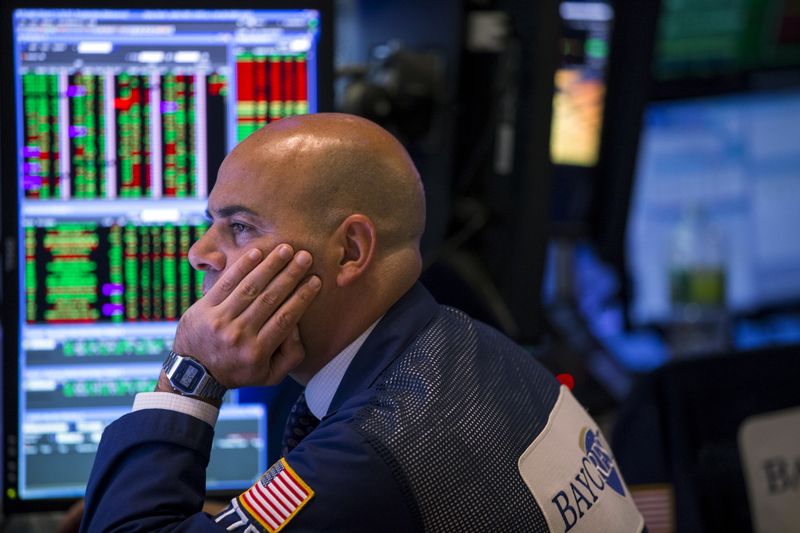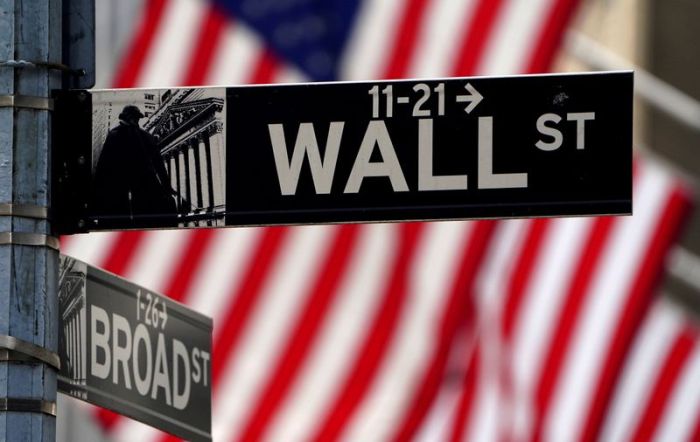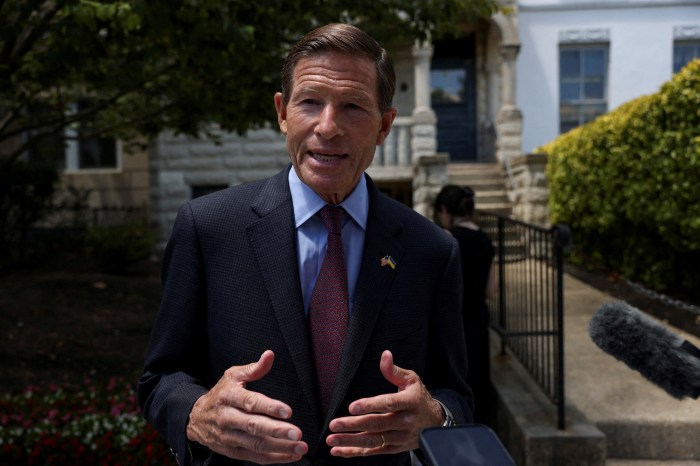WASHINGTON/LONDON (Reuters) -Wall Street notched broad gains on Friday, with the S&P 500 index closing at a record and global shares also finished at an all-time high, while oil prices rose for a fifth straight week.
Weaker-than-expected inflation data and news that U.S. President Joe Biden has secured a bipartisan infrastructure agreement with lawmakers gave a boost to stocks. The plan is valued at $1.2 trillion over eight years, of which $579 billion is new spending.
The S&P 500 rose 2.7% for the week, its strongest weekly gain since early February as Nike and bank stocks rose, and weaker-than-expected inflation data eased worries about a sudden tapering in stimulus by the Federal Reserve. [.N]
The Dow Jones Industrial Average rose 0.71% to end at 34,438.58 points, while the S&P 500 gained 0.34%. The Nasdaq Composite dropped 0.06% after holding near the previous session’s record high.
MSCI’s gauge of stocks across the globe closed at a record high of 721.91.
The pan-European STOXX 600 rose 0.13%, ending the week with gains of 1% following sharp swings on concerns of higher inflation hitting real income and leading central banks to raise interest rates.
Britain’s FTSE 100 index was up 0.37% and Germany’s DAX edged up 0.12%.
The latest U.S. personal consumption expenditures (PCE) data showed a measure of underlying inflation rose less than expected in May. Core PCE rose 3.4% year-over-year, above the Fed’s 2% flexible target.
“Economic data released this morning was mixed, but important readings in inflation were either in line with or slightly below expectations,” Paul Hickey of Bespoke Investment Group, LLC said in a note.
Views on the inflation outlook remained mixed.
“Today’s inflation data was another vote of confidence for the inflation is transitory camp,” said Edward Moya, a senior market analyst with OANDA.
U.S. inflation will remain elevated for two to four years, and only a market crash will prevent central banks from tightening in the next six months, BofA top strategist Michael Hartnett said in a note.
A build-up of financial stability risks linked to a low interest rate environment could lead to another downturn that interrupts the labor market recovery and impedes a return to maximum employment, Boston Federal Reserve Bank President Eric Rosengren said on Friday.
Yields for benchmark 10-year U.S. Treasuries, jumped back above 1.50% to close out a week in which yields notched their largest gains since March. [US/]
Germany’s 10-year yield, the benchmark for the euro area, edged up to -0.156%.
Emerging market stocks rose 0.89%. MSCI’s broadest index of Asia-Pacific shares outside Japan ended about 1% higher, while Japan’s Nikkei rose 0.66%.
Monetary and fiscal stimulus around the world in response to the COVID-19 pandemic is boosting financial assets, despite an uneven pace of recovery between regions, said Eddie Cheng, head of international multi-asset portfolio management at Wells Fargo Asset Management.
“Bonds go up, equity goes up, commodities go up – that is very much a liquidity-driven market,” Cheng said.
Sebastien Galy, senior macro strategist at Nordea Asset Management, said the U.S. infrastructure spending plan was “likely big enough for the economy without overheating it unnecessarily,” adding in a note that it meant “growth expectations improve somewhat.”
Oil prices rose for a fifth week after climbing to their highest since October 2018, on expectations demand growth will outstrip supply and OPEC+ will be cautious in returning more crude to the market from August.
Brent futures rose 62 cents, or 0.8%, to settle at $76.18 a barrel, while U.S. West Texas Intermediate (WTI) crude rose 75 cents, or 1.0%, to $74.05.
The U.S. dollar eased against a basket of other currencies, in choppy trading.
The Japanese yen strengthened 0.09% versus the greenback and the euro was up 0.07%.
Mexico’s peso extended gains after a surprise interest rate hike, while Latin American currencies were set to outpace their emerging market peers this week on hawkish central bank signals.
Sterling traded at $1.3885, down 0.27% on the day and on track for its worst month versus the dollar since September, after the Bank of England kept the size of its stimulus program unchanged and left its benchmark interest rate at an all-time low of 0.1% on Thursday.
Spot gold added 0.3% to $1,779.74 an ounce. U.S. gold futures gained 0.61% to $1,776.60 an ounce. [GOL/]
(Additional reporting by Herb Lash in New York, Ritvik Carvalho in London, Andrew Galbraith in Shanghai and Tom Westbrook in Singapore; Editing by Dan Grebler, Nick Zieminski and David Gregorio)

























